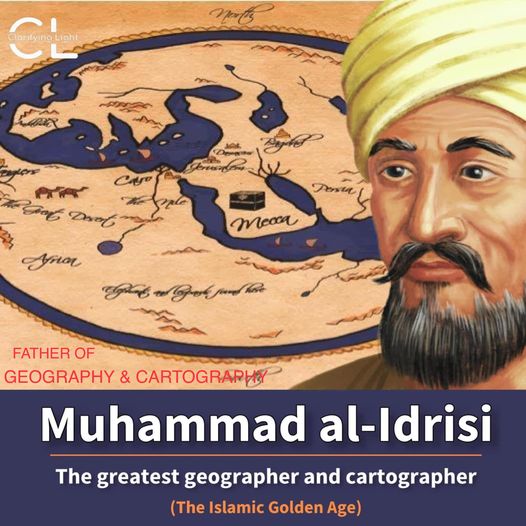
Introduction
In an age long before digital navigation apps and satellite imagery revolutionized the way we perceive the world, a brilliant scholar and cartographer named Muhammad al-Idrīsī emerged as one of history’s greatest geographers. In the 12th century, a staggering 900 years ago, he unveiled a masterpiece of cartography known as the Tabula Rogeriana, an extraordinary map that showcased the world in unprecedented detail. Yet, despite his significant contributions to the field of geography, al-Idrīsī’s name remains relatively obscure today. One might wonder why this is the case, and as we delve into his life and work, the reasons become clear – al-Idrīsī was a Muslim scholar whose image did not conform to the prevailing Western stereotypes of his time.
The Pioneering Work of Muhammad al-Idrīsī
Muhammad al-Idrīsī, a Moroccan geographer, traveler, and scholar, made his mark on history through his monumental work titled “The excursion of one who is eager to traverse the regions of the world.” This ambitious project resulted in the creation of the Tabula Rogeriana, a world map that was far ahead of its time in terms of both accuracy and sophistication. Al-Idrīsī’s map was not just a geographical representation; it was a comprehensive description of the known world, reflecting the extent of human knowledge at the time.
The Tabula Rogeriana: A Masterpiece of Medieval Cartography
The Tabula Rogeriana was more than just a map; it was a testament to al-Idrīsī’s dedication and meticulous research. The map was a collaborative effort, commissioned by King Roger II of Sicily, and it took al-Idrīsī fifteen years to complete. Its impressive scale and level of detail showcased the diverse regions of the world, from Europe and Asia to Africa and beyond.
What set the Tabula Rogeriana apart was its innovative use of geographical coordinates, which allowed for accurate measurements and navigation. Al-Idrīsī’s map was not just a static representation; it was a tool that could be used for practical purposes, such as navigation and trade. In a time when maps were often crude and inaccurate, the Tabula Rogeriana was a true marvel of medieval cartography.
The Legacy of Al-Idrīsī
Although Muhammad al-Idrīsī’s work was initially produced in Arabic, it was later translated into Latin, making it accessible to scholars across Europe. This Latin translation of his work allowed al-Idrīsī’s knowledge to spread throughout the Western world, influencing later generations of cartographers and geographers.
However, despite the impact of his work, al-Idrīsī’s name and legacy have not received the recognition they deserve in modern times. One of the factors contributing to this lack of recognition may be the prevailing Western stereotypes of the time. Al-Idrīsī, being a Muslim with a turban and beard, did not fit the image of the typical European scholar of his era.
Conclusion
Muhammad al-Idrīsī stands as a testament to the diversity of knowledge and scholarship that has existed throughout human history. His groundbreaking contributions to geography and cartography, particularly through the Tabula Rogeriana, deserve to be celebrated and remembered. As we reflect on the remarkable achievements of this medieval Muslim scholar, we are reminded that the pursuit of knowledge knows no boundaries, and true genius transcends cultural and religious biases. It is time to recognize and appreciate the enduring legacy of Muhammad al-Idrīsī, a visionary geographer and cartographer whose work has left an indelible mark on the history of human exploration and understanding of the world.
